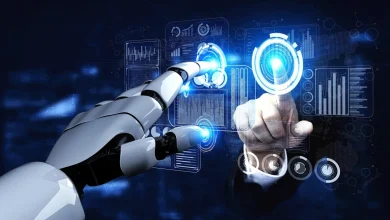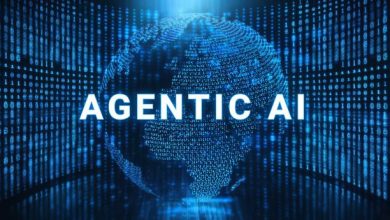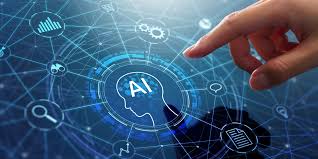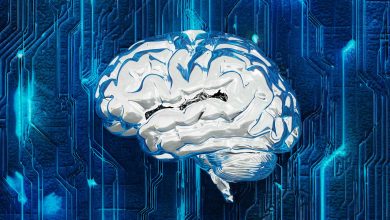The integration of Artificial Intelligence (AI) in different areas of human life has brought remarkable transformations. The same applies to Education. The processes involved in learning, teaching, and the production and distribution of educational resources are, and will continue to be, influenced by Artificial Intelligence technologies. The focus of this paper deals with the significant impacts of Artificial Intelligence technologies on Education and predictions on the possible changes in the future. It will also provide an impact assessment of how certain Artificial Intelligence tools like HappyMod, and even educational games such as Snake Rivals and Geometry Dash, have been enhancing learning in education.
Artificial Intelligence in Schools
The impact of Artificial Intelligence on school education and education in general, has been, and will continue to be, remarkable. It has been, and continues to be, implemented in all levels and sectors of education, including K-12 education and higher education. It also has to be noted that it has great potentials in expanding the use of learning resources in a more personalized way in terms of time, convenience, and preferences.
AI determines the students’ abilities and allocates appropriate e-learning materials and resources, automating clerical work and providing individualized learning on various levels. This shift allows the teachers to focus on actual instruction while AI handles a significant amount of the monotonous and administrative work. From the classrooms and remote learning to on-demand sessions, AI has transformed education in numerous ways. It improves learning outcomes and teaching effectiveness, both of which often go hand in hand.
Personalized learning and teaching approaches to creative problem solving in mathematics
AI has enabled education to target personalized learning as one of its core pillars. With the advent of AI tools, no longer will a student go unheard of while lessons are being taught using the one-size-fits-all approach. Every learner has a unique performance pattern and preferences, which are now taken into account by AI in line with the individual’s behaviors when building lessons to ensure that they work on their strengths while addressing their weaknesses.
Students are able to receive customized lessons on HappyMod as this platform offers numerous educational tools. HappyMod- this platform is accessible to users 24/7. Besides information on hacking and cracking, there are customized tools designed to suit your learning pace. Using these learning apps along with AI, students can solve educational problems, take part in interactive lessons, and play educational games tailored to their needs. For example, AI algorithms can adjust level of content depending on the student’s current ability, providing easier problems when the content is too difficult, and harder problems when the student tends to be doing well. Such kind of change in content according to a learner’s needs ensures that the learner is neither under challenged or over challenged, always moderated in the right manner. AI in Student Assessment and Feedback A more standard approach to educational assessments – quizzes, tests, and homework, is to find out the student’s level of competence. In any case, the issue of grading these assessments always appears to be a tedious one.
The feedback given from Essay Assist, while productive in point out a student’s strategies, does not pinpoint the strategies as precisely as a human tutor would. This is where artificial intelligence kicks in. Testing and marking of a test can now largely be done by machine. For example, an AI marking system can grade multiple-choice papers in a matter of seconds, while online systems provide real-time feedback (albeit superficial) on answers that are right and wrong. Even, advanced AI systems can grade essays by checking the grammar, structure, and otherwise logic of the sentences besides the content written. This instantaneous feedback allows students to actively correct their mistakes, as the answers are given back to them in real-time. As much as it is more preferable to receive the self revision feedback from a teacher, in reality a more productive approach can be taken. Also, AI can analyze data on students’ performance over a given period of time and assess the students more easily. Based on large data analyses done with AI, we can forecast problem areas and proactively provide the teacher strategies to use with the students even before they encounter the lesson. No student would be left out of focus, formulated strategies will be contextually more relevant to ensure maximum impact on student performance.
Artificial Intelligence and Educational Games: AI-Powered Learning Experiences.
In recent years, teachers have started using digital games as tools to motivate students and make learning more enjoyable. AI helps make the games more adaptable and keeps students engaged by offering customized learning environments. It also means that something can be changed or added to a game to customize the experience for the students.
An excellent AI-enhanced educational game is Geometry Dash. Although it was initially created as a challenging platform game, the app has changed to include useful elements for the enhancement of cognitive function and learning to solve problems as is the case in advancing to the next stage in a game. The participants have to increase their skill level to clear the next stage to be able to complete levels that become progressively more difficult. In real life, it is the thinking that comes most easily, nothing patronizing. Also, a diverse set of gadgets and technologies is made available that create the impression.
The game of Geometry Dash is a skill game, but it also incorporates many principles that can be used in practical problem solving.
Using AI, in games such as Geometry Dash, traditionally appealing only to avid gamers, can become completely patient foot chafed after sufficient practice. AI can determine which areas of these levels are manageable to players and provide challenges that are optimally difficult and thus enjoyable. Such game-based practice in learning has been tremendously effective to students who struggle to master knowledge with traditional school instruction. It provides a different way of learning which is far more engaging and fun. Such as in acquiring skills of reasoning, understanding spatial relationships in three dimensions, and coordinated eye–hand functions.
AI in Special Education: Feeding the Diversity of Learning.
The field of special education has greatly benefited from the infusion of AI, which hinges on a student-centered model of learning. Students with learning disabilities or special needs often struggle with challenges that are particular to their situation. These challenges of teaching almost non-reciprocal are addressable with AI-based innovations. It can compensate these teaching deficits of trucluation.
As an example, consider the use of AI where children having difficulty with dyslexia use a speech synthesis program to have their books read out to them. Students suffering from particular speech disorders are better able to talk because of AI speech recognition technology. AI can also generate tailored flexible learning pathways for students, allowing them to progress at their own pace and work on uniquely designed activities, enabling self-paced learning.
AI tools might also assist in the assessment and identification of specific learning challenges, offering new possibilities for parents and teachers to understand the root of a learner’s difficulties. AI can analyze the performance data and determine the most appropriate strategies for the specific learner.
AI in the Teaching and Classroom Setting
AI is very useful in the managing and running the school, in the same way as for the administration. Managing and teaching is simply a challenge for most teachers. AI helps them on managing class activities and the other ancillary tasks, freeing more time for direct interaction with the students.
For example, AI can replace putting attendance for each student from a physical register to a digital medium AI can keep track of attendance for each student and notify parents on their absence, if needed. AI also helps in planning and ensuring optimal use of all blocks and resources. Furthermore, there is AI driven software that supervises classroom activities and detects problems such as bullying or social isolation and calls for the teacher to assist.
For large educational institutions, AI is also able to assist in the management of information. By streamlining the processes of maintaining student accounts and generating reports, AI enables institutions to operate efficiently and remain focused on their primary mission of teaching.
Bridging the Gap: AI and Remote Learning Using Remote Learning tools for the first time may not be handy for users, as the situation dictated some users to learn the tools for the first time. The AI is also very helpful in teaching in such cases and suggests the best approaches to be taken to teach in that regard.
AI enables students to access virtual classrooms, interact freely to the teacher and fellow students, and individually perform assessments. AI is able to track and encourage students to remain focused on their work, as well.
Also, apps like HappyMod have provided learning materials to students all over the globe. HappyMod and other similar apps and games encourage learning when traditional forms of learning materials are unavailable in remote or underprivileged regions. Whether it is learning through educational videos on the phone, tablet or PC in remote areas, or student’s math talking with an AI chatbot to solve math problems like humans or learning through educational games like Geometry Dash designed to supplement traditional learning
On Ethical Considerations and the Future of AI in Education
The positive side of AI in education is apparent, however, it also comes with some ethical challenges. A major ethical challenge is data privacy. AI systems operate on considerable amounts of student data, and data is sensitive and must be protected (privacy policies must be followed). It is the ethical responsibility of educational institutions to safeguard students to privacy and control how personal data is processed, and over how AI systems operate to ensure balanced privacy.
Mechanical intelligence also has the potential to encode bias in its algorithms. The AI model may assume stereotypes and propagate discrimination if it’s working with biased data. To prevent such situations, it’s essential to ensure AI algorithms are tuned-set to diverse datasets and thoroughly scrutinized. In the coming times, education can change a lot as more advanced ways of learning ai technology emerges at that point of time. We can see some of it already in the personalized learning with tech, Active learning in class, and even in learning ai driven sophisticated tools. These advanced tech driven tools may change learner experiences and make it more Interactive. Other examples of highly visual and easy tools are the Sayatoo Subtitle Editor, showing just how easy it can make things. Remembering that education systems ai with what strategies can we make systems more effective and designing tools that can help classmates/screen interaction more seamless. It can and will streamline the process to make it more enjoyable and easier to learn.
Final Words
In the modern world, self learning has become so easy, Its mesmerizing. AI offers students a lot of control, where systems and learning can be self driven and in harmony with each other. Systems can tailor to the students goals and shim their individual strategies where they can learn at their own rate. All students perform better when they have the ability to move freely. It offers a basis of better education or a better future with more advanced learning.
There are many intuitive possibilities the future holds with the growth AI. They promise a lot of innovations in the education industry.
AI technology has the ability to Enhance student learning progress, streamline task completion, and assist teachers, all of which showcase the technology’s transformative potential within the classroom setting. At the same time, ethical concerns, such as privacy and Artificial Intelligence Bias, do need to be dealt with. There is a need to use AI with Justice and in a socially responsible manner
At the end of the day, the educator decides how AI technology will be adopted in the classroom.




